Rudimentary Perspective: A Simple Analysis of the Universe
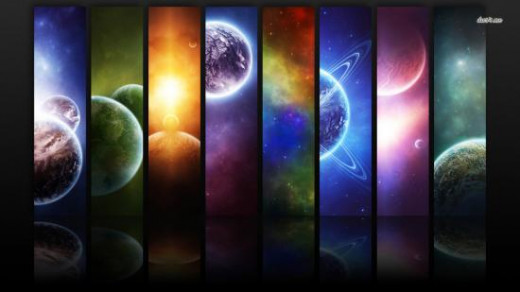
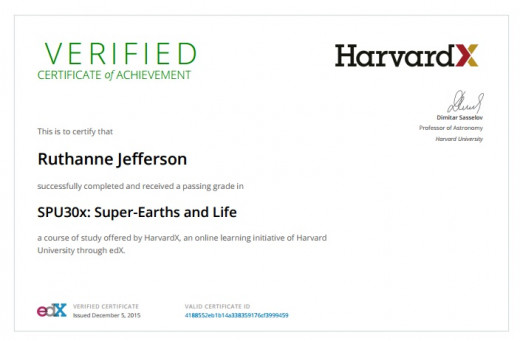
Care to Share
I am currently working on obtaining my Bachelors of Physics degree with prospective hopes of continuing with a Master of Astronomy. On top of required classes I also participate in optional classes that gain me earned credit opportunity or certificates of completion. I most recently completed one on exoplanets, so the universe is far from a new topic for me. I am very passionate for cosmology. More so than I am for most other things in life. So, I would love to offer a rudimentary interpretation of the universe to a wide array of readers who might be even slightly interested.
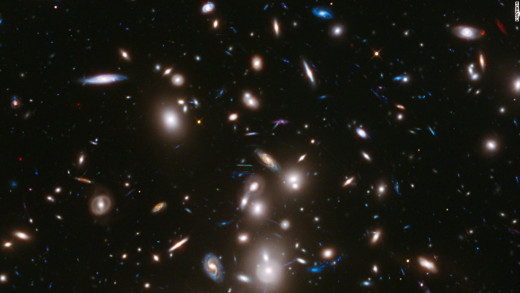
Our Place in the Universe.
Through centuries, it has always been easy for our ancestors to assume that we were the center of all that existed because we constructed our understanding based one what we could visually see and experience on a day to day basis. Without the proper technology to accurately observe space, we conjectured our own rationalized generalization of narrative.
Contemporary science today answers all of the fundamental questions about the universe and even where we lie within it.
Refer to the image above provided by the Hubble telescope. Roughly every body of light you can see is a galaxy. Even more significant when you take into consideration that an average galaxy contains at least 100 billion stars. Some of them have been calculated to have up to 400 billion. Each of those stars probably contain at least one planetary body orbiting it. Which makes the possibility of life existing some where outside of our own solar system highly plausible. But i've gotten off track..
So, where is it that we lie within the universe?
There are many levels of structure within the universe, and galaxies are merely one of them. To really acquire a solid and simple understanding of these structures, you could deduce things to a much smaller scale. Our cosmic address.
- Earth belongs to our solar system, which our Sun, our planetary neighbors and their satellites all belong to as well.
- Our solar system belongs to the Milky Way Galaxy. Our galaxy alone contains 100 billion stars, and our solar system is located 27,000 light years from the galactic center of our galaxy.
- Our Milky Way Galaxy resides within a "local group" of roughly 40 other galaxies.
- Groups that contain more than a few dozen galaxies are called galaxy clusters.
- There are also regions in which galaxies and galaxy clusters are extraordinarily close in proximity called super clusters.
- So our own local group is located on the outskirts of the local super cluster.
Distance Calculated in Space
When you study within the field of astronomy, one of the measurement terms you'll hear quite often when studying within our solar system is AU, or Astronomical Unit, which measures 150 million kilometers. ( 93 million miles for those of you who are not so good with conversion.)
When studying broad spectrum, you'll become familiar with the term light year, defined as the distance light can travel within one year. Roughly 10 trillion kilometers or 6 trillion miles. At that speed, light could circle the Earth close to 8 times in just a second. Light takes just a little over a second to reach the moon from the Earth, but with further distances, the effect is much more impressive.
Because light takes so long to travel to us from more distant objects, anytime we're looking at an object in the sky, we're seeing into it's past rather than looking at it within its current state. Alpha Centauri is a triple star system that hosts the closest stars to our solar system aside from our own sun. It lies 4.24 light years in distance. Which means if there have been any changes in light frequency, we would not currently know, because we are still seeing light from a little more than 4 years ago. And again, much more impressive with greater distance. For example, if we were observing an object 7 billion light years in distance, we would see it as it was when the universe was only half of its current age. --The Cosmic Perspective
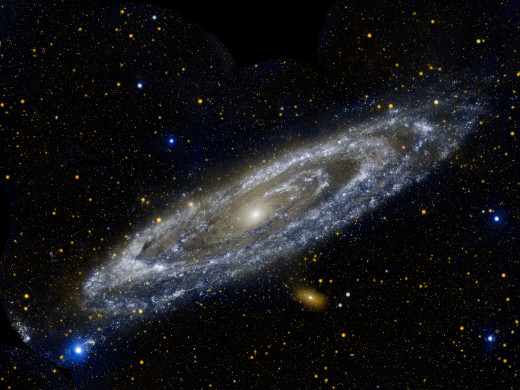
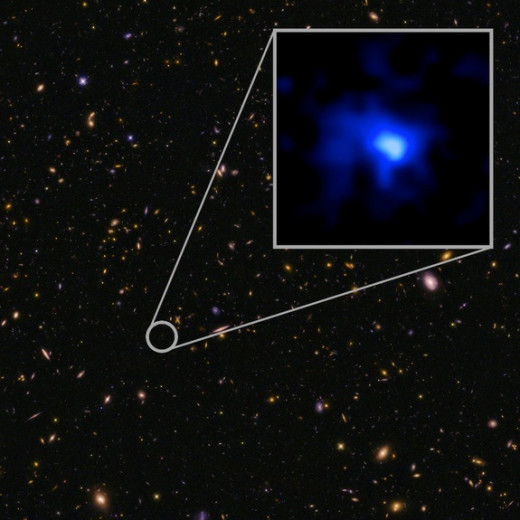
"The farther away we look in distance the farther back we look in time."
The Andromeda galaxy is our nearest neighboring galaxy within our local group. It is 2.5 million light years away from us. Because Andromeda is a distant galaxy, when we are able to take photos of it, we are viewing both space and time. Much like a time machine but less extensive.
To date the farthest known galaxy detected is known as EGS-zs8-1. It is 13.1 billion light-years from us and is thought to be 13.8 billion years old. We can measure this distance by observing how fast the galaxy is moving away from us and measuring and changes in light frequency being emitted.
The Universe Continues to Expand
The observed rate of expansion is utilized to calculate the approximate age of the universe.
Inevitably because the universe is uniformly expanding in all directions, distances between galaxies are increasing with time. Which implies that in the past galaxies must have been much closer together. And although the universe itself is expanding, the galaxies themselves are not expanding. Galaxies and galaxy clusters occupy a province in space where gravity was the dominant force preventing expansion and holding everything in place. Gravity is also the force that pushes clouds within solar systems to collapse and eventually become dense enough to produce energy through nuclear fusion.
"Star Stuff"
So far, by studying stars of different ages we have become knowledgeable of conditions of the early universe. The early universe consisted of only the simple elements. Hydrogen and helium. Their relative abundance (by weight) was 75% hydrogen and 25% helium. The uneven distribution allowed gravity to act in the areas of higher concentration to initiate the "clumping" of matter. The death of previous stars provided the 2% of heavier elements needed for planetary formation. 4 and a half billion years ago, the estimated time of our own solar system birth, the earlier generations of stars had already converted 2% of the galaxies hydrogen and helium into heavier elements.
Earth as well as most of it's living inhabitants, are composed primarily of carbon, nitrogen, oxygen and iron. Evidence assumes that all of these elements were acquired from the stars.
Understanding the Age of the Universe.
One of the most comprehensible interpretations of the age of the universe, for me personally, has been the cosmic calendar approach. Compressing 14 billion years into a single 12 month year, with each month representing a little more than a billion years.
- The Big Bang occurred the first instance of January 1st.
- Presumably the Milky Way formed sometime around February.
- In the postliminary months, many stars would have lived and died to provide the galaxy with chemical elements.
- Our solar system and home planet would not have formed until early September.
- Primitive and microscopic life would have flourished on Earth by late September.
- By mid-December familiar animals would have been prominent.
- By December 26th early dinosaurs roamed.
- By December 30th dinosaurs were extinct, which would allow small species to thrive.
- 9 p.m. December 31st, early hominids began to walk up-right.
- Our present time, is the stroke of midnight December 31st.
The entirety of human civilization resides within the the last half minute on the cosmic calendar.
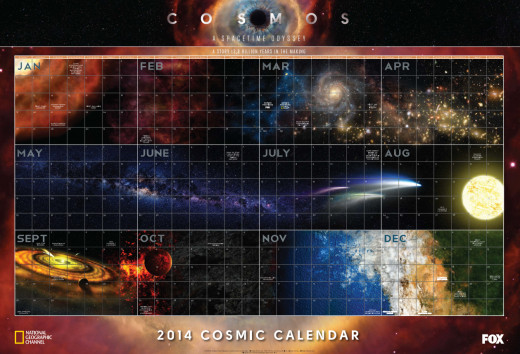
Citations:
http://www.space.com/29319-farthest-galaxy-ever-found.html
Tyson, N. D, (2004) Origins: 14 Billion Years of Cosmic Evolution; W.W. Norton and Company, NY & London



